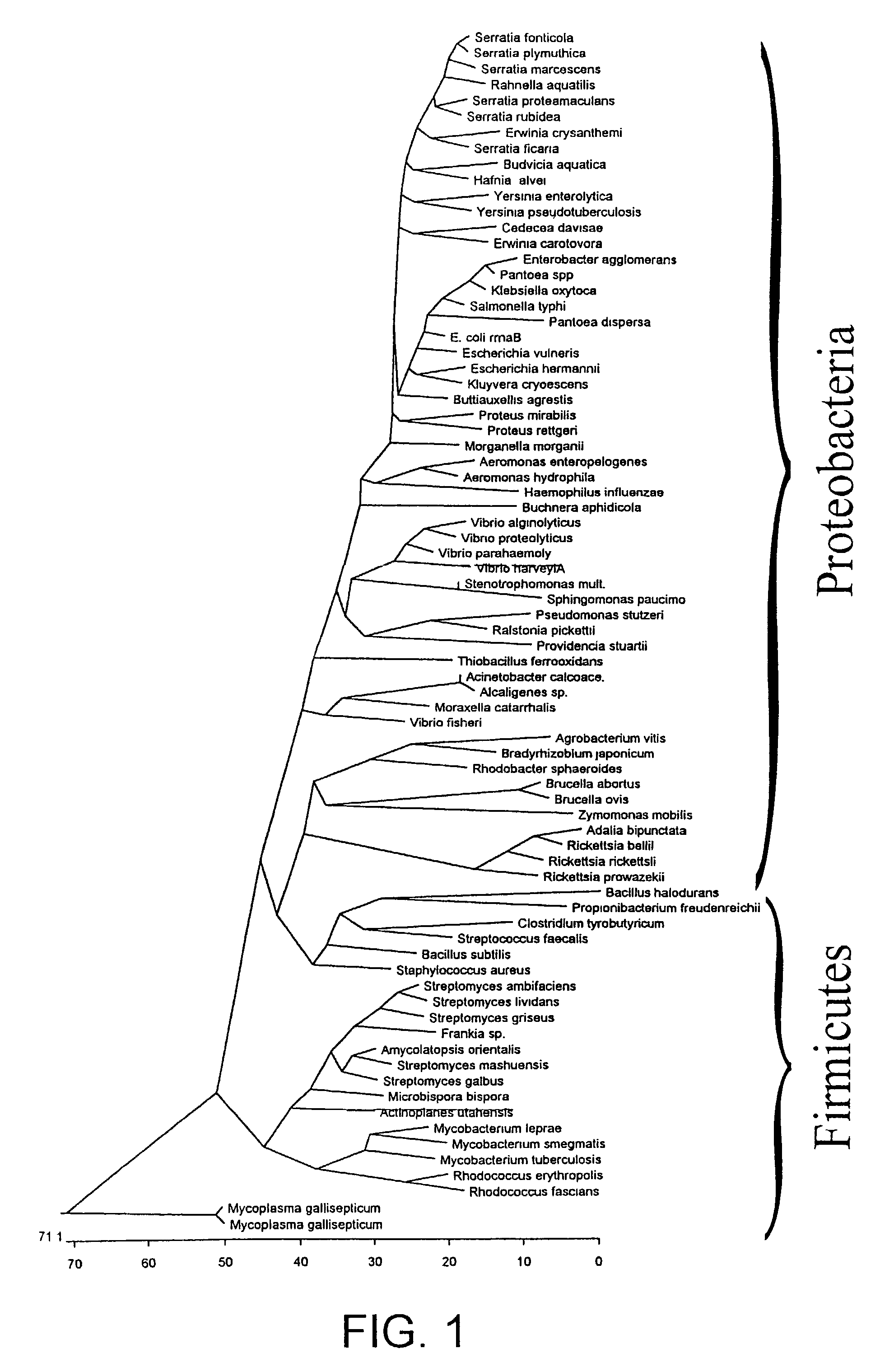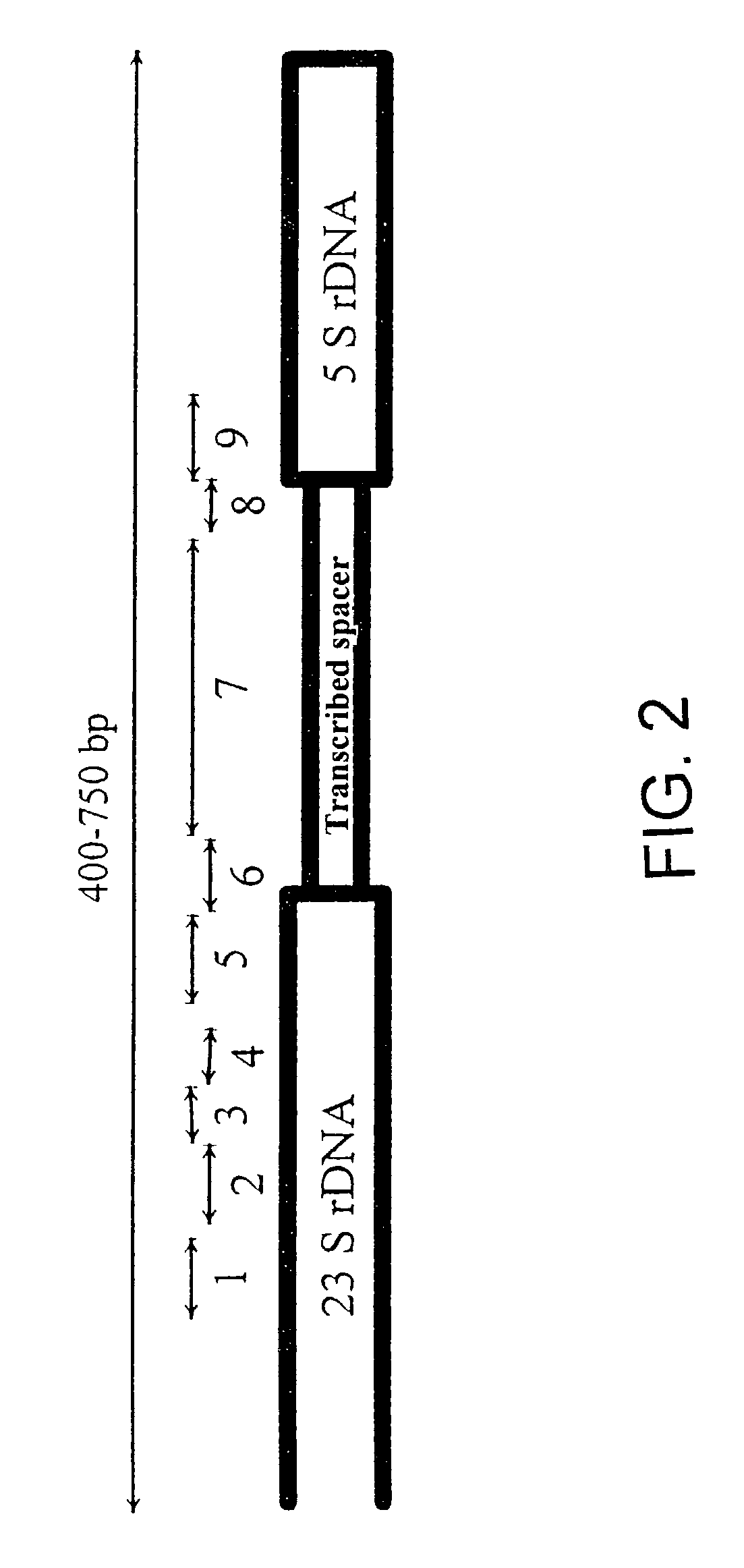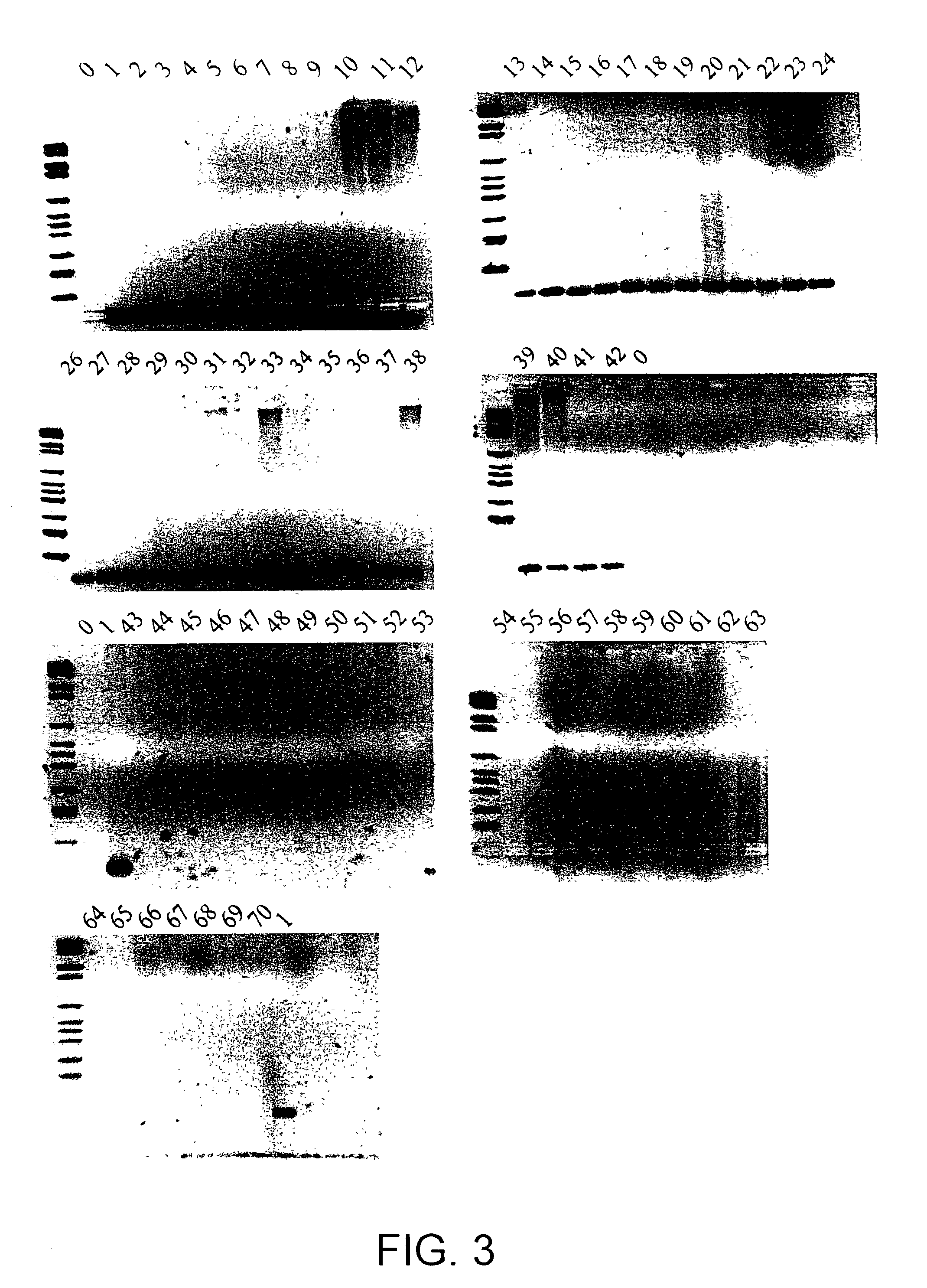Nucleic acid molecules for detecting bacteria and phylogenetic units of bacteria
a technology of phylogenetic units and nucleic acids, which is applied in the field of nucleic acid molecules for detecting bacteria and phylogenetic units of bacteria, can solve the problems of loss in isolation of dna, low detection limit, and high cost of direct sequencing of genes of microorganisms to be identified, so as to achieve optimization of amplification and optimization of parameters, the effect of easy determination
- Summary
- Abstract
- Description
- Claims
- Application Information
AI Technical Summary
Benefits of technology
Problems solved by technology
Method used
Image
Examples
Embodiment Construction
[0130]This invention comprises essentially 5 partial aspects which reflect the invention in its general form and in its special aspects:[0131]strategic selection of DNA target regions using adjacent genes[0132]description of use of a ribosomal DNA region from the end of the 23 S rDNA, the transcribed spacer, and parts of the 5 S rDNA to detect all bacteria[0133]provision of primers and probes for many bacteria[0134]detection of the families of the enterobacteria and their members[0135]use of a consensus PCR to detect all bacteria
Strategic Selection of DNA Target Regions Using Adjacent Genes
[0136]The invention consists in the use of portions of adjacent genes to detect taxonomic units, i.e., kingdoms, classes, phyla, families, genera and strains, as well as intermediate forms of these units. The advantage of the invention is that DNA regions which span two genes are very heterogeneous with respect to variability. That has been found, for instance, with the ribosomal operons, especial...
PUM
| Property | Measurement | Unit |
|---|---|---|
| Fraction | aaaaa | aaaaa |
| Temperature | aaaaa | aaaaa |
| Temperature | aaaaa | aaaaa |
Abstract
Description
Claims
Application Information
 Login to View More
Login to View More - R&D
- Intellectual Property
- Life Sciences
- Materials
- Tech Scout
- Unparalleled Data Quality
- Higher Quality Content
- 60% Fewer Hallucinations
Browse by: Latest US Patents, China's latest patents, Technical Efficacy Thesaurus, Application Domain, Technology Topic, Popular Technical Reports.
© 2025 PatSnap. All rights reserved.Legal|Privacy policy|Modern Slavery Act Transparency Statement|Sitemap|About US| Contact US: help@patsnap.com



